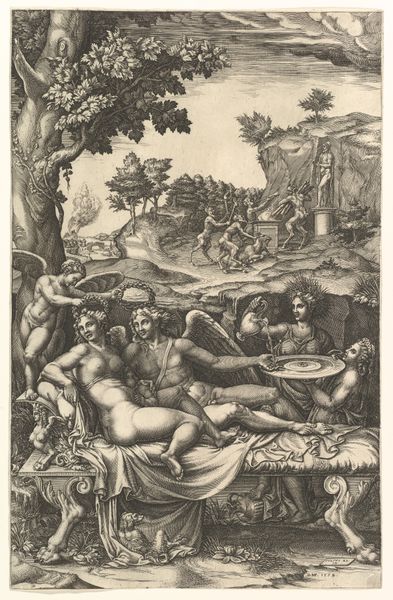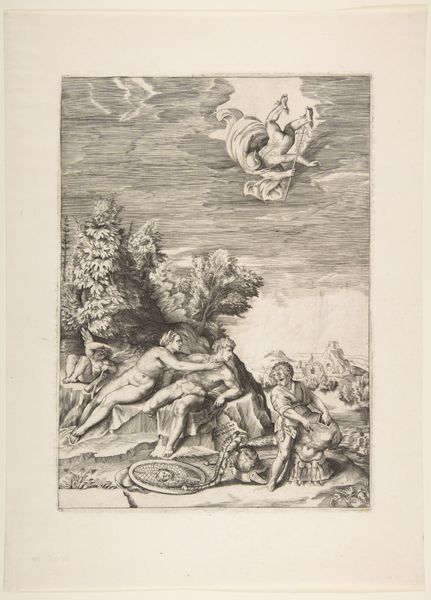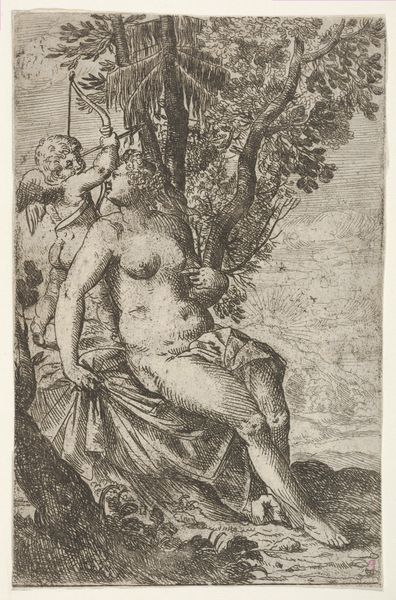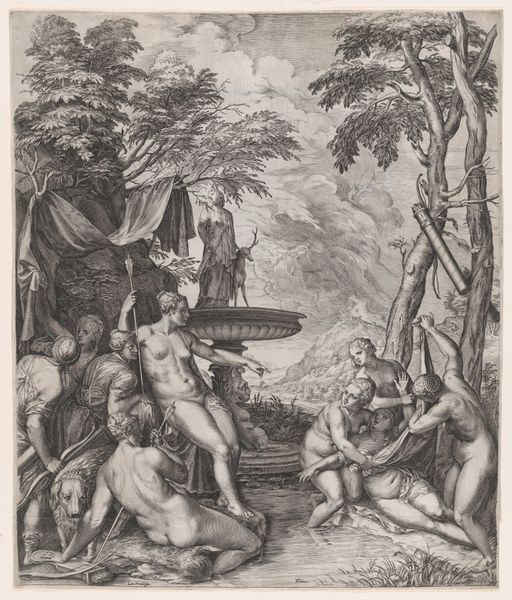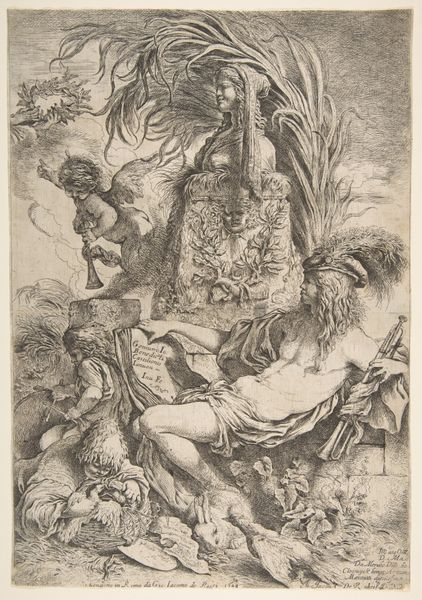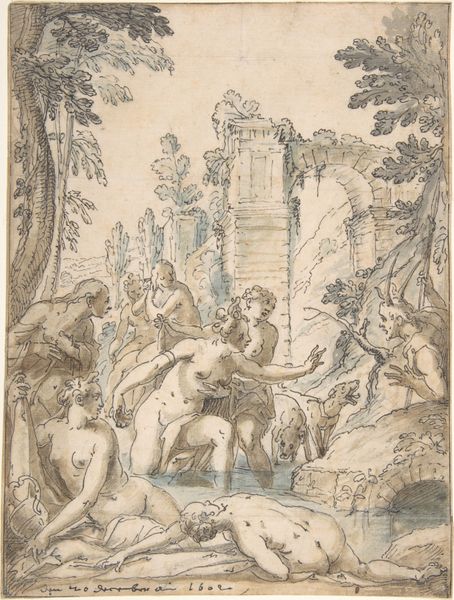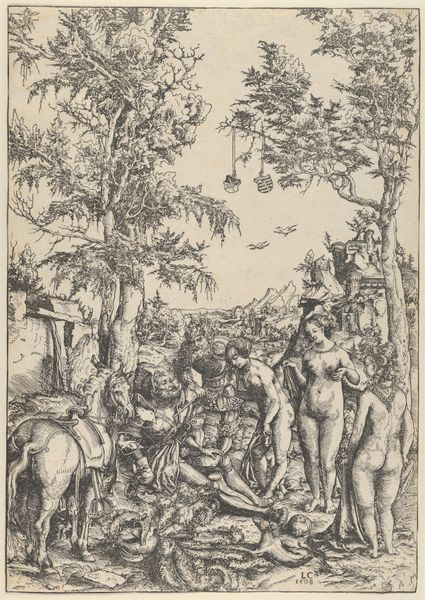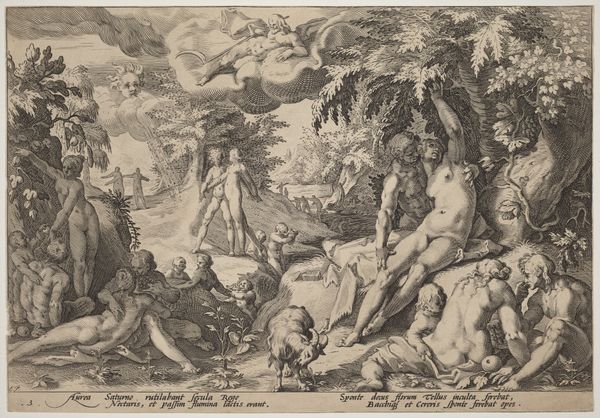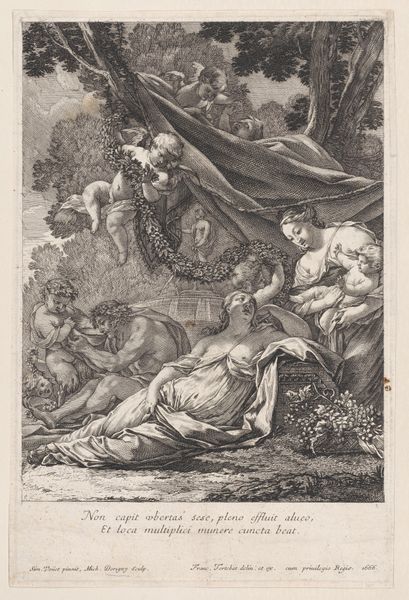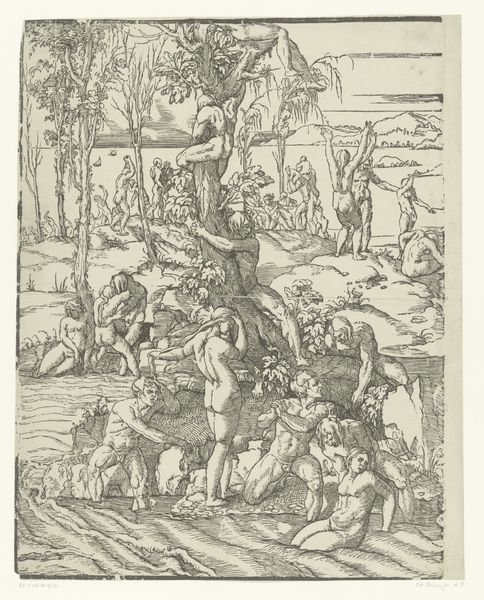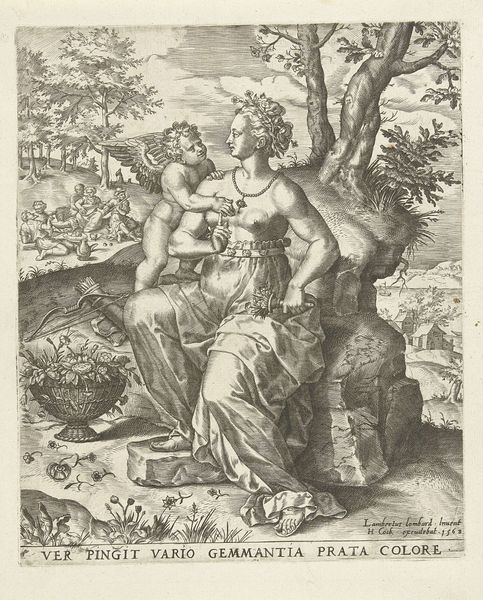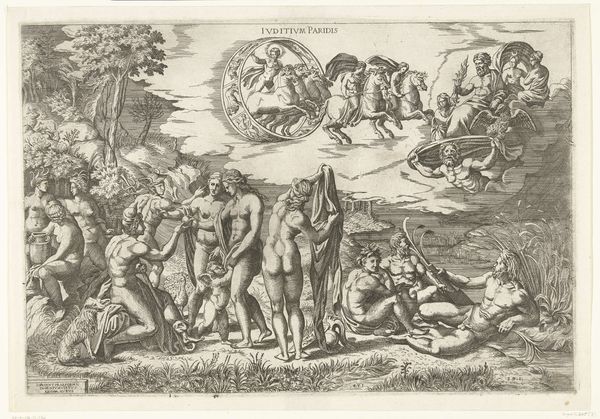
drawing, print, ink, engraving
#
drawing
#
ink drawing
#
ink painting
# print
#
landscape
#
ink
#
pen-ink sketch
#
northern-renaissance
#
nude
#
engraving
#
male-nude
#
watercolor
Dimensions: Sheet: 5 7/8 × 7 3/8 in. (14.9 × 18.8 cm)
Copyright: Public Domain
Editor: We are looking at Albrecht Dürer's "The Sea Monster" from 1498, rendered in ink. The landscape elements and the nude figures create such an intricate and evocative scene. The fine lines, the shading... it all seems very dreamlike. How do you interpret this piece, focusing on its formal qualities? Curator: It is interesting to observe how Dürer balances the contrasting textures. The smooth, almost idealized forms of the nude figures—consider the careful rendering of their musculature and skin—against the dense, intricate detailing of the landscape, with its fortifications and foliage. We see a distinct interplay of organic and geometric forms. How does that contrast strike you? Editor: I see what you mean! The contrast is striking. It is a controlled tension... everything is carefully balanced. It gives the landscape depth and a tangible quality that emphasizes the smooth figures in the foreground. Can we talk about line and tone? Curator: Precisely. Note the varying densities of lines—closely hatched lines creating darker tones to model form and shadow versus the delicate, sparse lines defining the figures' features and contours. What effect do you think Dürer intended to create using these different applications of tone and line? Editor: I imagine Dürer used the denser lines to almost "weigh down" the architecture against the almost floating nude figures, the sea monster, and their watery medium. What is the semiotic effect here, Curator? Curator: An acute observation! Through these means, Dürer guides the viewer’s gaze, and generates a structural distinction between foreground and background, the real versus the ideal. Dürer is arranging a highly codified visual language. I find it particularly striking. Editor: I had not considered it that deeply! Analyzing the piece with your insights really enriched my appreciation for Dürer’s deliberate mark-making. I will not look at linear compositions in quite the same way. Curator: Indeed. Appreciating the structural language in "The Sea Monster" allows us a far greater understanding of how much care and intention can be contained in even seemingly simple prints.
Comments
No comments
Be the first to comment and join the conversation on the ultimate creative platform.
